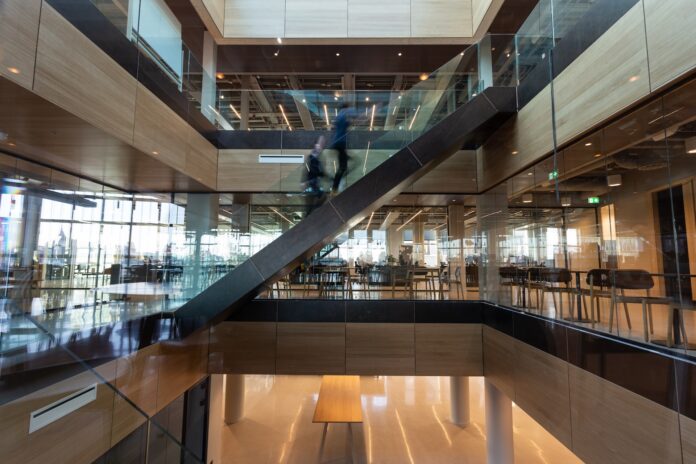Facility management processes can be challenging and time-consuming. Today’s organizations need to ensure the smooth operation and maintenance of their facilities while optimizing costs and maintaining a productive work environment. In this blog post, we will explore some practices and tools for enhancing productivity and cost-effectiveness through a focus on process optimization. So, let’s dive into streamlining facility management processes and reap the benefits of maximum efficiency.
Identifying Inefficiencies
The first step towards streamlining facility management processes is identifying areas where inefficiencies may exist. These can include outdated workflows or procedures, inadequate communication among teams, insufficient documentation for tasks or processes, and overlapping or redundant processes.
By examining your current practices and recognizing potential inefficiencies, you can begin to take the necessary steps to improve your facility management processes.
Technology and Automation
Investing in advanced facility management technology can greatly contribute to streamlining processes and increasing efficiency. These technological solutions often combine traditional facility management functions with new capabilities such as IoT integration, data analytics, and artificial intelligence to provide a more unified and comprehensive approach. By harnessing the power of innovative facility management technology, organizations can achieve greater insights, improved decision-making, and increased productivity.
One of the most effective ways to streamline facility management processes is through process automation. Automated systems can help reduce labor-intensive tasks, allowing your team to focus on more productive and value-generating activities. Consider implementing automation tools in areas such as work order management, preventive maintenance scheduling, energy management, inventory, and procurement. When incorporating automation tools, ensure proper training and support are provided to minimize the learning curve and maximize adoption by the staff.
Convenience and Efficiency
Remote monitoring and IoT (Internet of Things) technologies are transforming facility management, allowing for more efficient monitoring of assets and real-time data collection. By implementing IoT sensors and devices, facility managers can track and analyze real-time energy consumption, monitor critical equipment performance, identify maintenance issues before they escalate, and optimize space utilization. IoT devices and remote monitoring can lead to significant time and cost savings, improved asset life cycles, and a more proactive approach to facility management.
An integrated facilities management approach combines all aspects of facility management under a single umbrella, including maintenance, operations, and services. This approach can streamline processes by reducing time spent on managing multiple contracts and vendors, improving communication and coordination among teams, maximizing resource utilization, and delivering consistent service quality. By adopting an IFM approach, organizations can realize better efficiency, cost savings, and a more cohesive facility management strategy.
Design and Collaboration
Workplace design and space utilization play a critical role in facility management processes. Optimal space utilization can improve employee satisfaction, optimize energy consumption, and reduce costs. Consider strategies such as implementing flexible workspaces, creating multi-functional spaces, analyzing room and desk occupancy data, and optimizing heating, ventilation, and air conditioning (HVAC) systems. Through thoughtful workplace design and space management, facility managers can create a more efficient and cost-effective work environment.
Effective collaboration and communication among teams are essential for successful facility management. Encouraging open communication channels and fostering a collaborative environment can help break down silos and promote a unified approach to problem-solving. This can result in streamlined processes, better cross-functional understanding, and improved overall efficiency. Establish clear communication protocols, hold regular team meetings, and invest in technology solutions that facilitate information sharing and collaboration across teams.
Continual Improvement
Having a set of clearly defined performance metrics and regularly evaluating your facility management processes can help monitor progress and identify areas for further improvement. Key performance indicators (KPIs) should focus on factors such as response times, service quality, cost savings, and asset efficiency. Regular evaluation prompts facility managers to review performance against goals and ensures that your organization stays on track towards achieving maximum efficiency and cost-effectiveness.
Data-driven decision-making is crucial for continuous process optimization and enhancing facility management efficiency. By leveraging the data collected from various tools and systems, facility managers can uncover insights about their operations, identify trends and patterns, and make informed decisions for ongoing improvements. Accurate, reliable data also aids in setting goals and monitoring progress, ensuring your facility management processes remain agile and responsive to the organization’s needs.
Conclusion
Streamlining facility management processes is an ongoing journey requiring constant evaluation and improvement. By identifying inefficiencies, implementing process automation, optimizing workplace design, and promoting collaboration and communication, organizations can achieve enhanced productivity and cost-effectiveness. The future of facility management lies in continuous innovation and adaptation to keep up with the evolving needs of organizations and their facilities.





